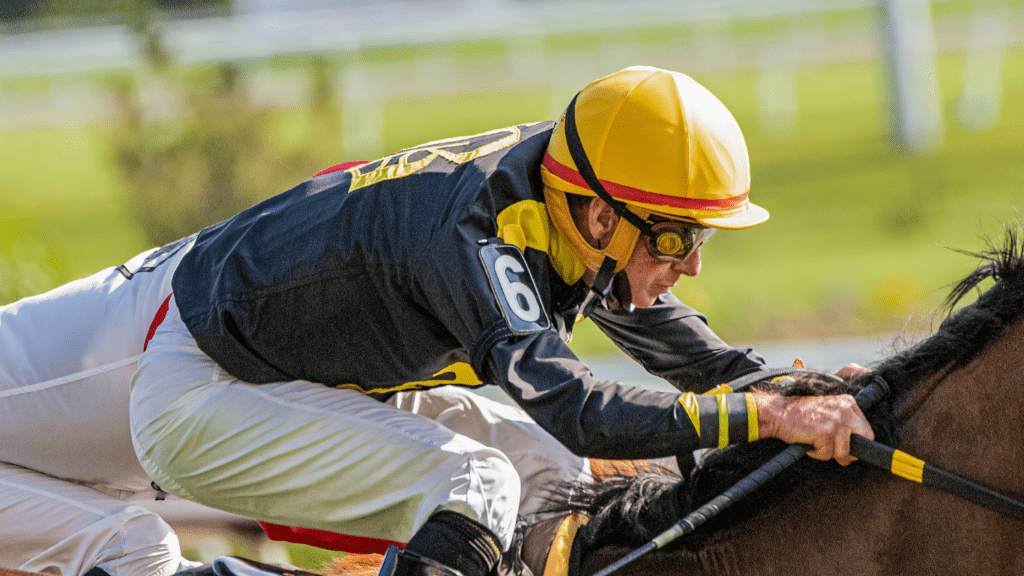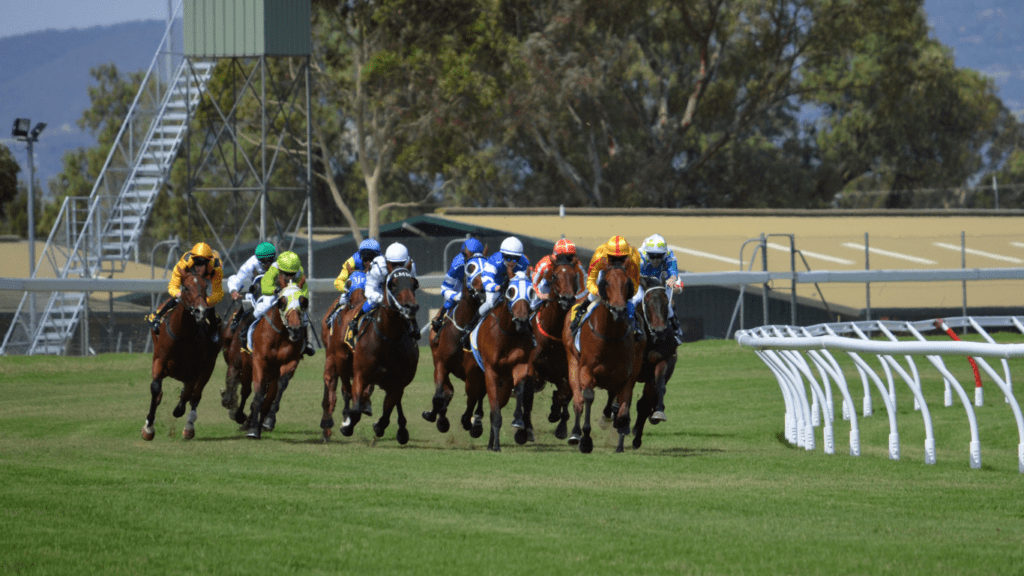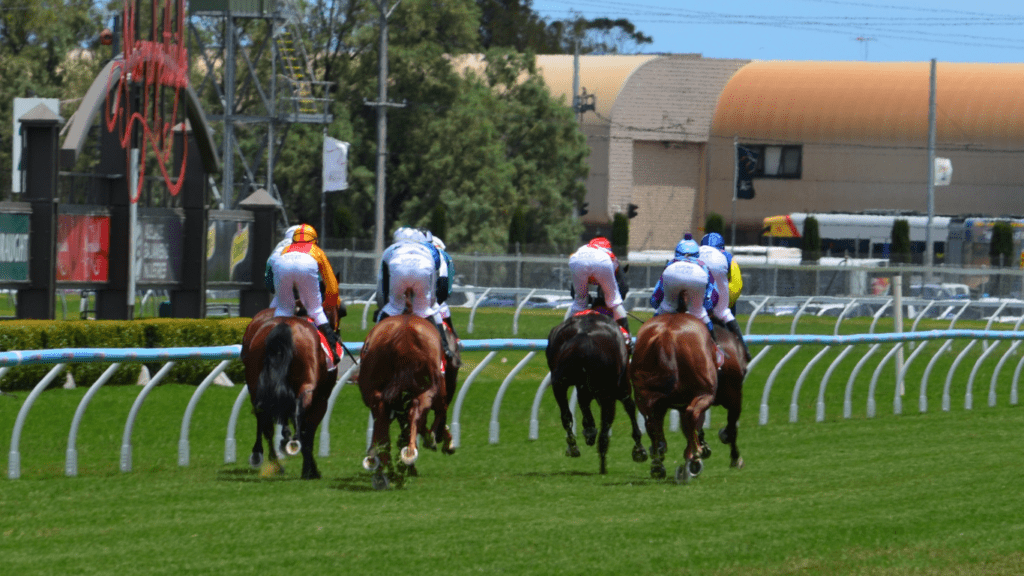Understanding Horse Racing
Horse racing captivates with a blend of speed, strategy, and skill. Each race offers a unique spectacle of athleticism that keeps fans coming back for more.
The Basics of Horse Racing
Horse racing consists of thoroughbred or standardbred horses competing on a track. Thoroughbred races typically involve flat racing, while standardbred includes harness racing. Each race features jockeys guiding the horses as they race toward the finish line. The objective is straightforward: the first horse to cross wins.
- Jockey: The rider who controls the horse during the race.
- Purse: The prize money awarded to the winning horse’s owner.
- Post Position: The starting gate position assigned to a horse.
- Odds: The likelihood of a horse winning and the basis for calculating payouts.
- Furlong: A measurement of distance in horse racing equal to 1/8 of a mile.
Each term forms a foundational element in understanding the dynamics of horse racing. Familiarity with these terms enhances the overall enjoyment and comprehension of the sport.
Types of Horse Races

Understanding the types of horse races enriches the betting experience and enhances appreciation for the sport’s nuances. There are two primary categories of horse racing: flat racing and jump racing, each with distinct characteristics.
Flat Racing
Flat racing, the most common type of horse race, involves horses running on a level track without obstacles. Distances vary, typically ranging from five furlongs to two miles. Prominent races, such as the Kentucky Derby and the Prix de l’Arc de Triomphe, exemplify flat racing’s global allure. In these races, speed and strategy determine outcomes, requiring jockeys to gauge pace and positioning expertly.
Jump Racing
Jump racing, also known as National Hunt racing, features obstacles like fences and hurdles that horses must clear during the race. It’s prevalent in countries like the UK and Ireland, with courses often longer than flat races, covering distances from two miles to four-and-a-half miles. Famous jump races include the Grand National and the Cheltenham Gold Cup. While navigating jumps, horses and jockeys demonstrate significant skill and endurance, adding a layer of intrigue to betting strategies.
The Essentials of Track Betting
Understanding track betting basics enriches the horse racing experience. Players explore diverse betting options while making informed choices.
Types of Bets
Grasping the variety of bets in horse racing aids in strategic wagering. Several bet types offer unique opportunities:
- Win Bet: Wager on a horse to finish first.
- Place Bet: Bet on a horse to finish first or second.
- Show Bet: Bet on a horse to come in first, second, or third.
- Exacta: Pick the first two finishers in exact order.
- Trifecta: Select the top three finishers in precise order.
- Superfecta: Choose the first four finishers in correct order.
These bets range in complexity and potential payouts—players often tailor strategy to match race conditions.
How Odds Work
Comprehending odds is vital in maximizing track betting profits. Odds reflect a horse’s chance of winning according to bookmakers and influence potential returns.
In the format “5-1”, the first number indicates profit for every $1 wagered, so a $2 bet yields $10 profit and $12 total return. Lower odds suggest a higher chance of winning but lower payouts, while higher odds imply greater risk and rewards. Observing fluctuations in odds as race-time approaches offers insights into market sentiment and potential value bets.
Strategies for Beginners
Deciphering successful betting strategies enriches the horse racing experience. Beginners who assess both past performances and financial limits position themselves for more effective wagering.
Analyzing Past Performances
Examining past performances reveals patterns in a horse’s racing history. The Daily Racing Form (DRF) provides a comprehensive database of race results. Paying attention to variables like the jockey, track conditions, and any recent changes in a horse’s distance, surface, or equipment offers valuable insights. By analyzing whether a horse consistently beats similar competitors or performs better under specific conditions, handicappers can make informed wagering decisions.
Managing Your Bankroll
Responsible bankroll management preserves betting longevity. Allocating a specific portion, typically 1-5%, of one’s bankroll for each bet minimizes risk. Think of bankroll as both a resource and a safeguard—protecting it is essential for sustained betting. Adjusting bet sizes based on confidence levels or specific races strengthens one’s ability to weather losses. Tools like betting calculators and apps help track expenditures and gains, promoting disciplined wagering.
Common Mistakes to Avoid
Betting on horse races is thrilling, but beginners often make mistakes that impact their experience. Identifying and steering clear of these errors enhances enjoyment and potential success.
Overbetting
Placing too many bets at once dilutes focus and strains bankrolls. Managing funds effectively matters more than sheer volume. Beginners might get excited by the variety of betting options available, like Win, Place, or Trifecta, and scatter money across too many wagers. Instead, concentrating on a select few bets that have been carefully researched often proves more beneficial in the long run.
Ignoring Track Conditions
Track conditions significantly affect race outcomes. Failing to consider these details skews predictions and lessens accuracy. Whether the track is dry, wet, or somewhere in between, each horse has its preferred conditions. Reviewing past performance under similar conditions often provides insights into how a horse might perform on a given day. Thus, accurately assessing the track helps form more informed betting strategies.



